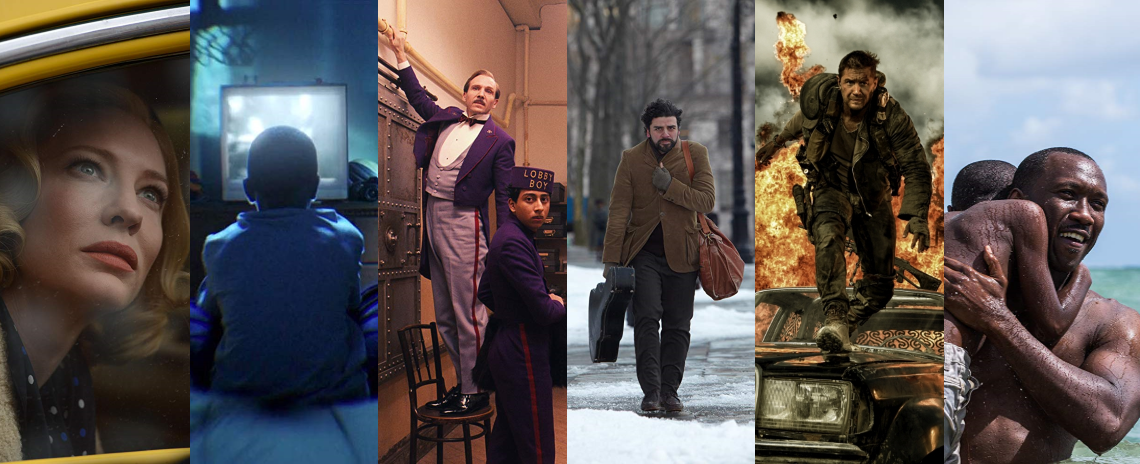Reflecting on and ranking the cinematic highlights of the past decade to craft a “definitive” list of the Best Films of the 2010s is a daunting task. Accordingly, the Lens reached out to numerous St. Louis-based film critics, journalists, scholars, professionals, and other movie lovers to assist in its retrospective on the 2010s. Each of our 25 contributors provided a ranked or unranked list of their favorite films released in 2010-19. These were then scored and integrated into a final, unified list that (hopefully) reflects our contributors’ collective favorites. (The model is similar to Sight & Sound’s once-a-decade Greatest Films of All Time poll; ties are indicated with "=".) The Lens also asked the contributors to offer some thoughts on one of the films in the final Top 20. Some contributors provided an intensely personal testimonial; others an effusive checklist of highlights; and others a mini-essay on the film's emergent historical significance. Let's get to it: Here are the Best Films of the 2010s.
(Contributors’ individual lists are presented at the bottom of this post for reference.)
The Runners-Up
35. Nightcrawler (2014)
33=. Holy Motors (2012)
33=. The Lego Movie (2014)
31=. Certified Copy (2011)
31=. The Look of Silence (2015)
30. Clouds of Sils Maria (2015)
29. Her (2013)
27=. Arrival (2016)
27=. Spider-Man: Into the Spider-Verse (2018)
26. Inside Out (2015)
23=. The Master (2012)
23=. Roma (2018)
23=. Twin Peaks: The Return (2017)
22. Under the Skin (2014)
21. The Shape of Water (2017)
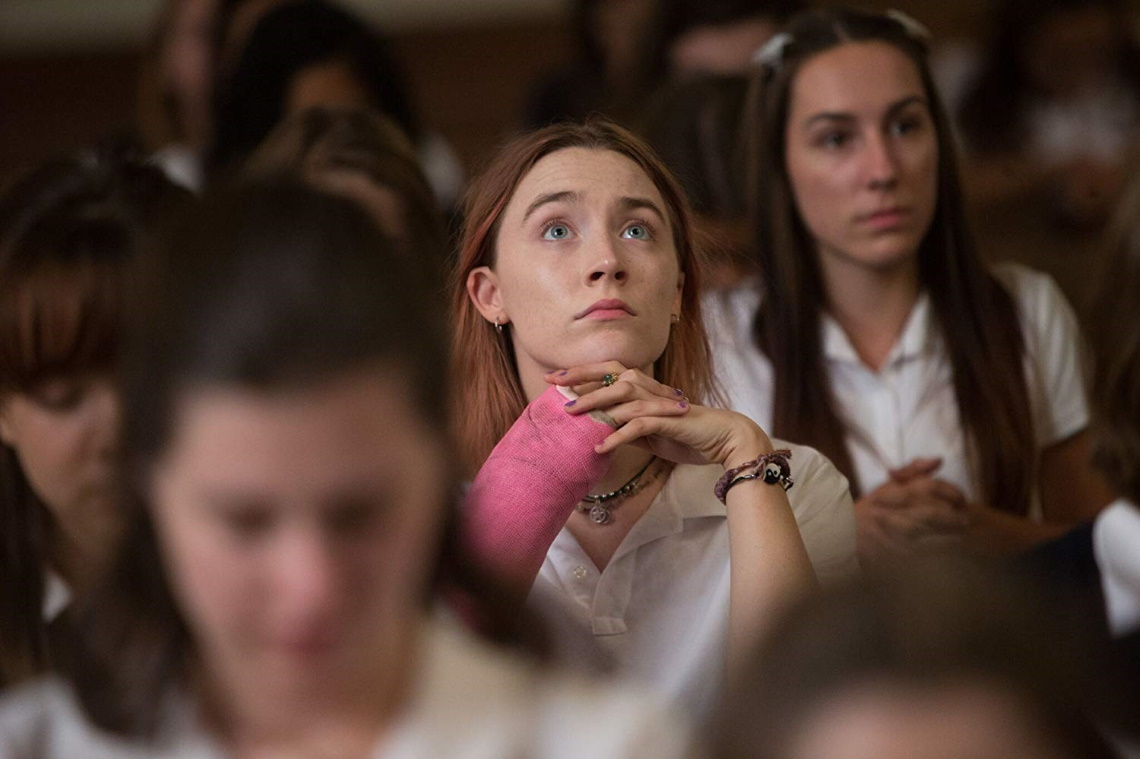
20. Lady Bird (2017)
Lady Bird, writer-director Greta Gerwig's semi-autobiographical debut feature film, offers an astute, clever, funny, and poignant portrait of the teenage transition to adulthood. It's 2002 as Gerwig zeroes in on Christine, who has given herself the name Lady Bird, thereby taking control of her identity even while she struggles to explore and define it.
Originally titled Mothers and Daughters, the heart of the film is the continuous conflict between Lady Bird and her mother, Marion, who reveals her own challenging upbringing when she describes her mother as "an abusive alcoholic." A senior at Immaculate Conception High School, Lady Bird longs to move far away from Marion and her hometown of Sacramento, what she contemptuously calls "the Midwest of California." Gerwig describes this film as "a love letter to a place that only came into focus after I left."
Dropping into Lady Bird's life over the course of a year, Gerwig identifies one theme as time rushing forward, "one scene tumbling into the next" in a revealing shorthand. Brief moments communicate volumes about values – betrayals of friends, discovery of sex, secret support from her father amid continuous conflict with her mother from whom she must disengage to realize herself, even while repeatedly acknowledging that her mother has a good heart. So does Lady Bird, as she will find, especially when she shows empathy for a boyfriend. Gerwig observes that the mother/daughter conflict is so contentious, which it surely is, because they're so close.
Supporting characters are established as three-dimensional (as opposed to stereotypes) in very brief dialogue exchanges: Lady Bird's father, Larry, and Sister Sarah Joan, for example. All of the performances, especially Saoirse Ronan's as Lady Bird, Laurie Metcalf's as Marion, Tracy Letts' as Larry, and Lucas Hedges' as boyfriend Danny are masterfully realized; so, too, the technical presentation with the camera capturing but never intruding into scenes. Similarly, the soundtrack artfully adds commentary without ever feeling overbearing. The title itself comes from the Mother Goose nursery rhyme “Ladybird, Ladybird” about running home to save a child. Gerwig wanted to portray universal truth in a small story. She achieved that and more – a thoroughly entertaining film and a noteworthy feature debut – one with heart and soul. (Diane Carson)
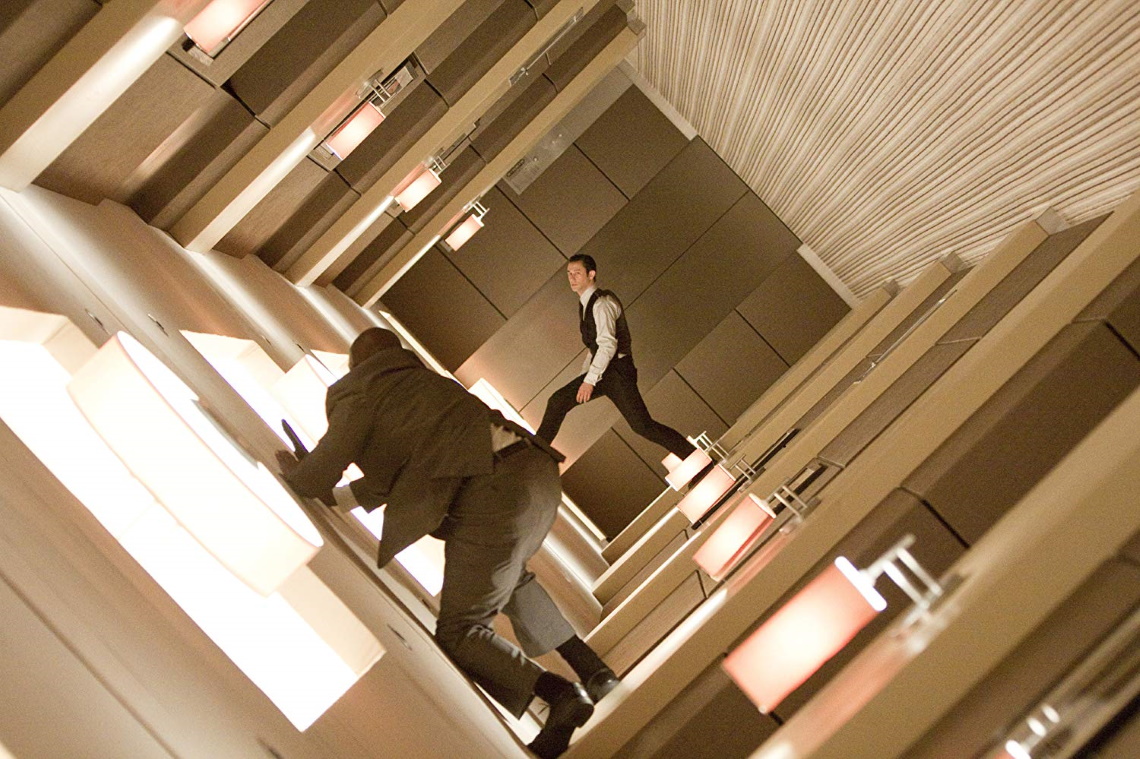
19. Inception (2010)
There is nothing better than a good night’s sleep – but what if someone were rooting around in your subconscious as you slept? That is the premise for writer-director Christopher Nolan’s brilliant film Inception. Dom Cobb (Leonardo DiCaprio) is the thief who visits during slumber, whisking away corporate secrets, ideas, and passcodes. Cobb’s vocation has made him a legend in the world of corporate espionage and a fugitive everywhere else. When Saito (Ken Watanabe) offers Cobb a way to reclaim his life, he jumps at the virtually impossible mission. Redemption is a powerful fuel for both characters and filmmakers.
Nolan certainly knows how to tell a compelling story, taking what most would consider an intangible endeavor – dreaming – and transforms it into an emotionally logical action film. The action never overpowers the narrative but simply magnifies the concepts of dream-state. He creates peril and doubt, and sets up dilemmas for his characters that thrust viewers into this tension. The true secret to this film is the established rules of this complex game. We are brought into this world with Ariadne (Ellen Page), and the rules become our life jacket as Cobb falls deeper and deeper into the depths and danger of dreams.
DiCaprio elevates this film with a stellar performance. His run of good roles weaves through the early 2000s to peak with Inception. The special effects of the intricate dream sequences bend our minds and imaginations. These effects and dreams are as organized as the corporations they mine – allowing us to focus on the stakes and the subsequent emotions. Like Cobb’s spinning tractricoid top, Inception has become a totem for filmmakers and audiences alike – one of excellence in both storytelling and directing – and continues to thrill nine years after its release. (Kent Tentshert)
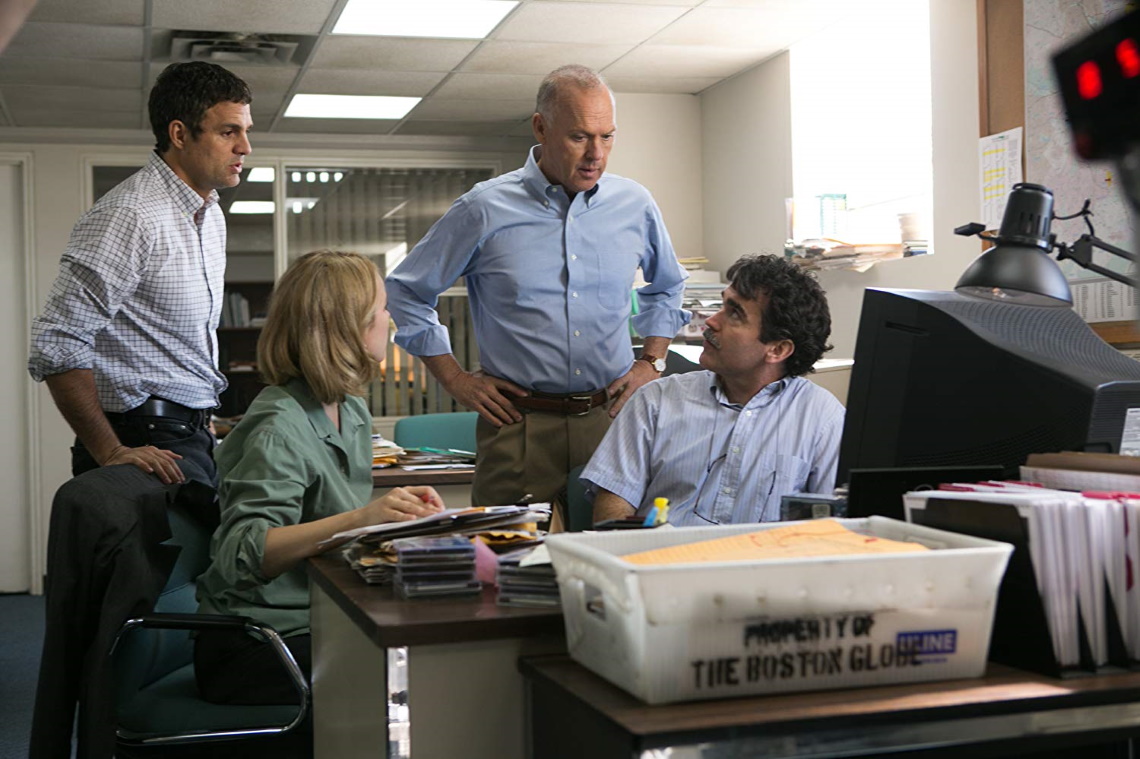
18. Spotlight (2015)
The movies continued their long-standing admiration (though not always mutual) for another medium – specifically newspapers – with 2015's Best Picture Oscar winner Spotlight. And as with a previous Oscar winner, All the President’s Men (1976), this is based on a true story, one from the early part of the new century. Director Tom McCarthy, who co-wrote the screenplay with Josh Singer, guides his all-star cast through a tale of dogged investigation, but it's also a classic David vs. Goliath story. The big warrior here is the very powerful Catholic Church in the Boston area (some might consider it their "home turf"), an institution that was covering up the sexual abuse of young children (and paying off accusers) for decades. As reporters for the Boston Globe begin digging, they are stunned to learn that many priests were shuffled about, assigned to other districts, states, or even other countries.
Liev Schrieber exudes a quiet, tightly wound gravitas as new editor Mike Baron, who has no qualms about "kicking the hornets' nest" and pushes the paper's award-winning investigating team, the "Spotlight" elite. And while the survivors' stories are heartbreaking and compelling, the film is almost a romance, a nostalgic "love letter" to the now declining (not quite dead but wounded) newspaper industry. In its later scenes, there are rumblings of the emerging Internet, but the big desire (and allure) is to grab the latest edition, hot off the press, pulling it apart with your ink-stained fingers. The reporters are almost like a "super team" with the enhanced powers to wade through endless pages of research while pounding the pavement to track down a witness that may just slam the door rather than speak. And there's great suspense as major influential forces attempt to squash the piece, while competing papers may "scoop" our heroes and all their hard work is for naught. These heroes prove that the pen is mightier than the sword. (Maybe that explains Superman's cover gig.) Plus, many of these reporters must push past their own crisis of faith, agonizing over whether they are betraying the beliefs their families hold so tightly. McCarthy and his talented cast, particularly Michael Keaton making the most of his career's interesting "third act" and Mark Ruffalo's quirky take on a laser-focused scribe, deliver a dynamic docudrama that's both wistful and inspiring for future seekers of truth. (Jim Batts)
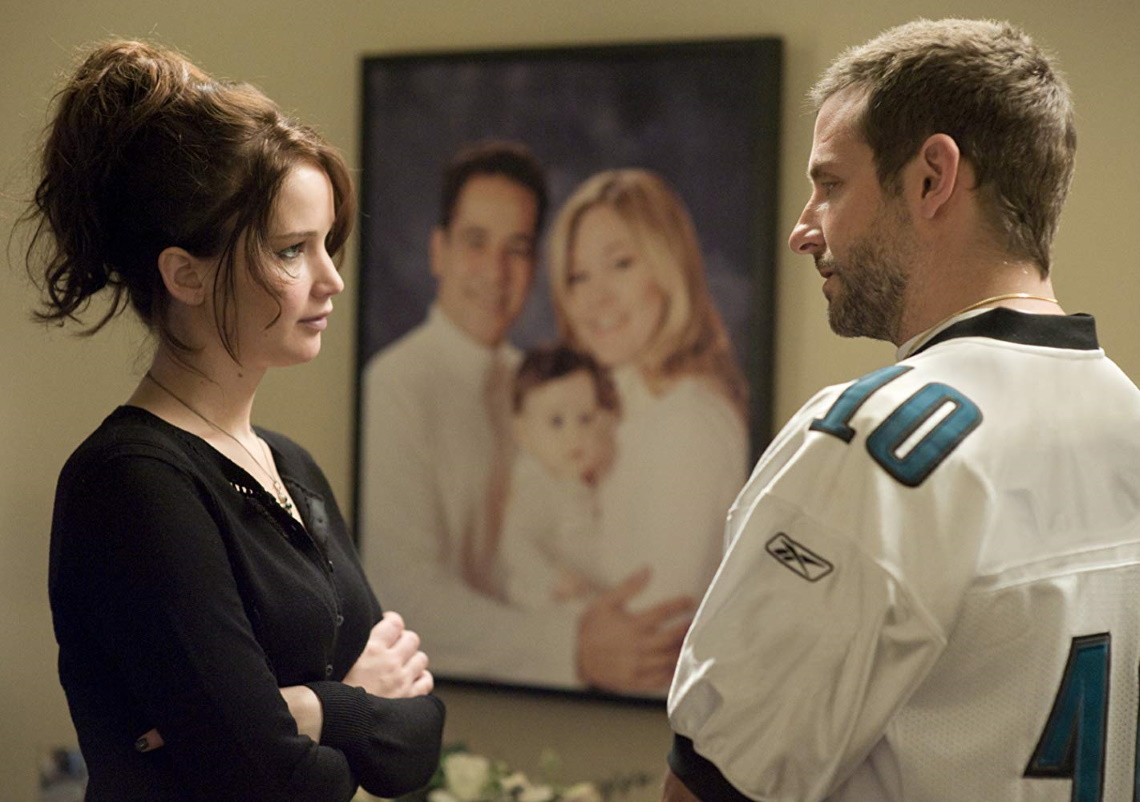
17. Silver Linings Playbook (2012)
In a way, Silver Linings Playbook was the perfect storm of breakout talent and comeback performances. David O. Russell's faithful and whip-smart adaptation of Matthew Quick's novel, coupled with the dramatic emergence of Bradley Cooper and the ferociously intuitive work of Jennifer Lawrence (who took home the Oscar for her work), created lightning in a bottle that will reverberate for decades. Robert De Niro's soulful work as Cooper's sports-obsessed, OCD-riddled father was his best work in years. Jackie Weaver dug in deep as the tirelessly devoted mother. Chris Tucker shined bright – in a role unlike anything he's ever done – as the flawed yet loyal friend. The entire cast is superb in this film, making every scene feel authentic.
Silver Linings Playbook is that rare breed of film: an edgy romantic comedy with just the right amount of drama mixed in. It’s arguably the best work of Cooper’s and Lawrence's careers, who wash away any memory of the desperate heroine from Winter's Bone (2010) or the mean fiancé in Wedding Crashers (2005) in performances that are brutally honest and heartfelt.
Some actors perform well no matter who stands behind the camera, but a few are best with one or two directors. In this film, Russell formed a signature bond with Cooper and Lawrence, as well as De Niro. Russell would go on to make two more films with each of them, and although American Hustle (2013) and Joy (2015) were great, their work in this 2012 gem stands out seven-plus years later as something special. A film that could make you laugh, cry, and, most importantly, feel good in the end without feeling manipulated or cheated. And with that, I need to watch this movie again. (Dan Buffa)
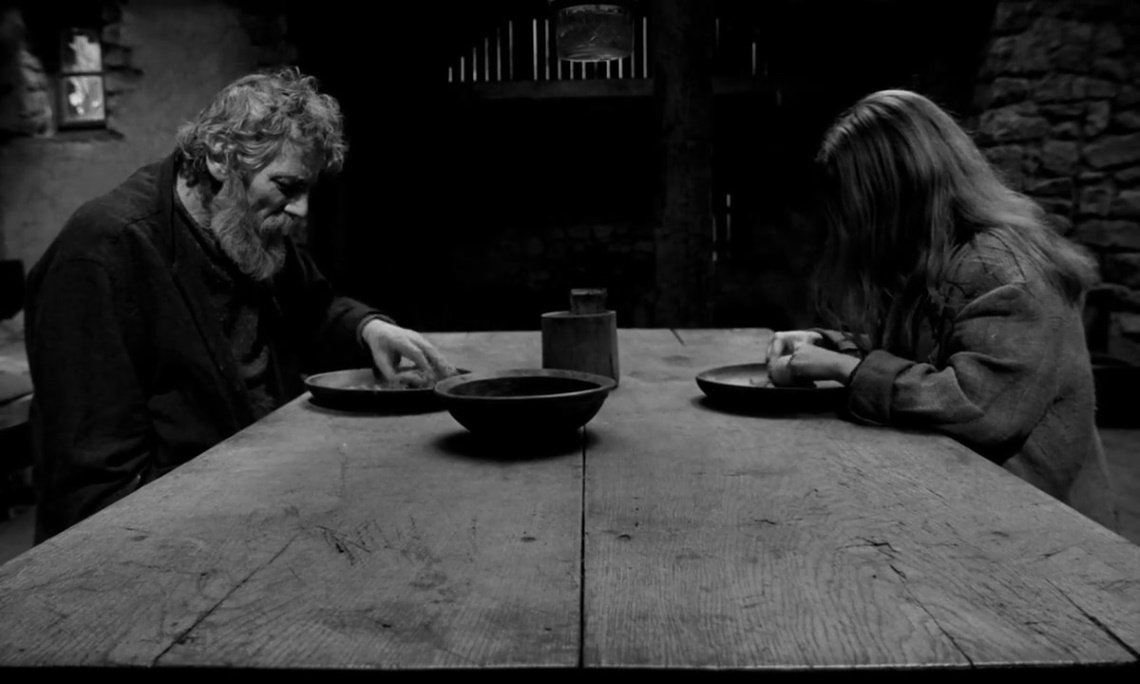
16. The Turin Horse (2012)
Perhaps cinema’s most extended meditation on the inescapable fact of death, Béla Tarr’s self-consciously final film, The Turin Horse, is, in its own stark, severe, blackly comic way, a stirring paean to the human spirit. Stripped of all but the barest artifice of plot, the film, which consists of a mere 30 shots over 146 minutes, is little more than a catalog of the daily toils of elderly farmer Ohlsdorfer (János Derzsi) and his unnamed daughter (Erika Bók), who live in a remote rural farmhouse: They eat potatoes, chop firewood, fetch water from the well. Occasionally, a strange visitor or band of nomads stops by their hut for a chat. And all the while, an apocalyptic wind howls outside their door – until one day, it suddenly stops, shortly after which the world is bathed in total darkness. These characters, who barely speak as they go about their business with a sense of grim impassivity, are imbued with cosmic significance by gorgeously austere black-and-white cinematography of DP Fred Kelemen, whose camera roves through the film’s highly circumscribed setting like the eye of some bitter God – a deity deriving droll amusement from his creation’s absurd condition. In our current age of impending climate catastrophe, Ohlsdorfer and his daughter’s persistence in the face of the sheer pointlessness of their own existence grows only more uncannily moving each day. Maybe we can’t save this world, but still we can struggle onward. (Keith Watson)
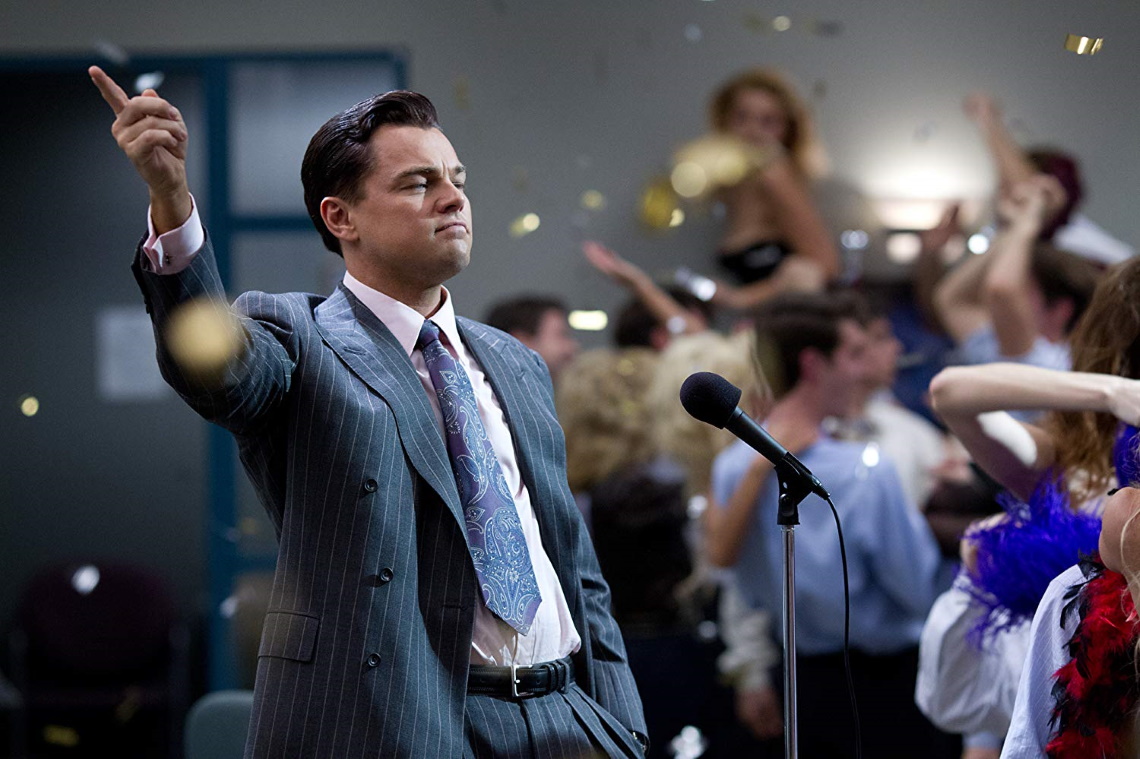
15. The Wolf of Wall Street (2013)
The Wolf of Wall Street is the story of a man who gains the world but had long lost his soul before the story even begins. Jordan Belfort (Leonardo DiCaprio) is Caligula in an Armani suit, armed with the cheat codes for America. An insatiable appetite shaped like a man and wearing the face of a former Tiger Beat heartthrob. A perverted Robin Hood with an office building full of merry men and women stealing from the rich and poor alike and giving to themselves. His office building quickly becomes a den of iniquity operating like a pirate ship on international waters staffed by losers, degenerates, and mutants weaponized by greed and lust. Watching Jordan’s almost supernatural ascension from day trader to Wall Street slime royalty is more exciting than any movie about the financial industry has any right to be. Even Jordan’s fall from grace is free of any maudlin pathos or hacky Ebenezer Scrooge-like epiphanies. No, Jordan just learns the all too American lesson that the justice system is different for the rich and, as long as there are fools you can separate from their money, you’ll be just fine.
Why is this one of the best films of the decade? Chiefly because it's fucking hilarious. Scorsese and screenwriter Terrance Winter take a perverse glee in depicting the unrestrained id of these maniacs and their pursuit of debauchery. The boardroom scene where they discuss what they can and cannot do to the little person they hired is one of the funniest scenes ever put to film. The physicality of DiCaprio’s performance during the Quaalude driving scene is akin to the great comedians of the silent era. The conversation between Jordan and Donnie (Jonah Hill) about his decision to marry his cousin and his plan in case any of their offspring are genetically abnormal is funnier than the entire Hangover franchise. Donnie's lamentation of “I'm never eating at Benihana again – I don’t care whose birthday it is,” is delivered with such righteous indignation that I can't even believe it was an actor reading it from a script. (Ian McDonald)
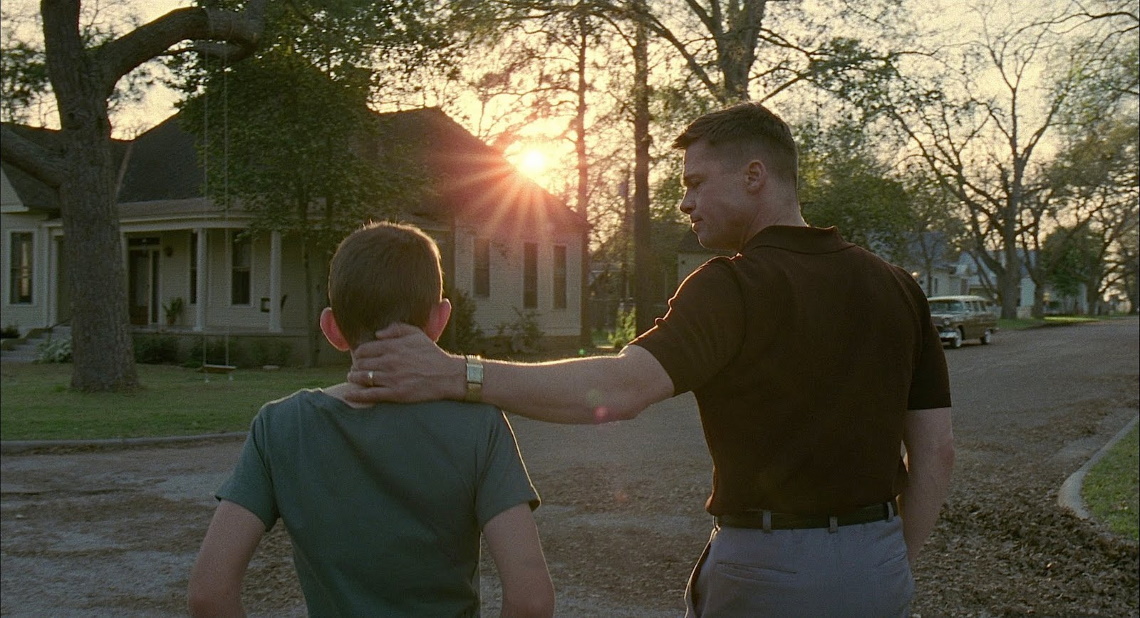
14. The Tree of Life (2011)
Part of Terrence Malick’s The Tree of Life takes place during the childhood of our protagonist. I’m in a unique position, as a film critic, of actually having been that old when The Tree of Life was released. I was introduced to it as “that one movie my Grandma hated.” It’s a masterwork that I’ve seen many times. The first time I saw it was in 2014, going back to read the review my excited little self wrote on it, two things stick out: first, the beautiful imagery and unconventional editing, each contributing to the visceral experience that I had that first time, and, second, the film’s impenetrability. A few years later, I revisited it and found something startlingly disturbing. I saw the anxieties of a man laid bare – anxieties tied to the smell of fresh grass in the summer, of being a child silently observing as the Father (excellently played by Brad Pitt) harrasses a waitress, and even the incredible kindness of Jessica Chastain’s Mother. The film was a terrifying thing.
The last time I saw The Tree of Life, not yet a week ago, I saw forgiveness. Not so much in the religious imagery (the film can be viewed secularly, even if it is inherently religious), but as the ultimate binding force of humanity. Where those anxieties were, I found self-awareness and elation. I grew up with The Tree of Life – both physically and emotionally – and it, along with Malick’s other recent work, has helped me understand who I am. It’s not just one of the best films of the decade because it’s immensely watchable or because it represents the signifiers of a single man, it’s one of the best films because it asks you to know yourself. I’m thankful for that. (Stephen Tronicek)
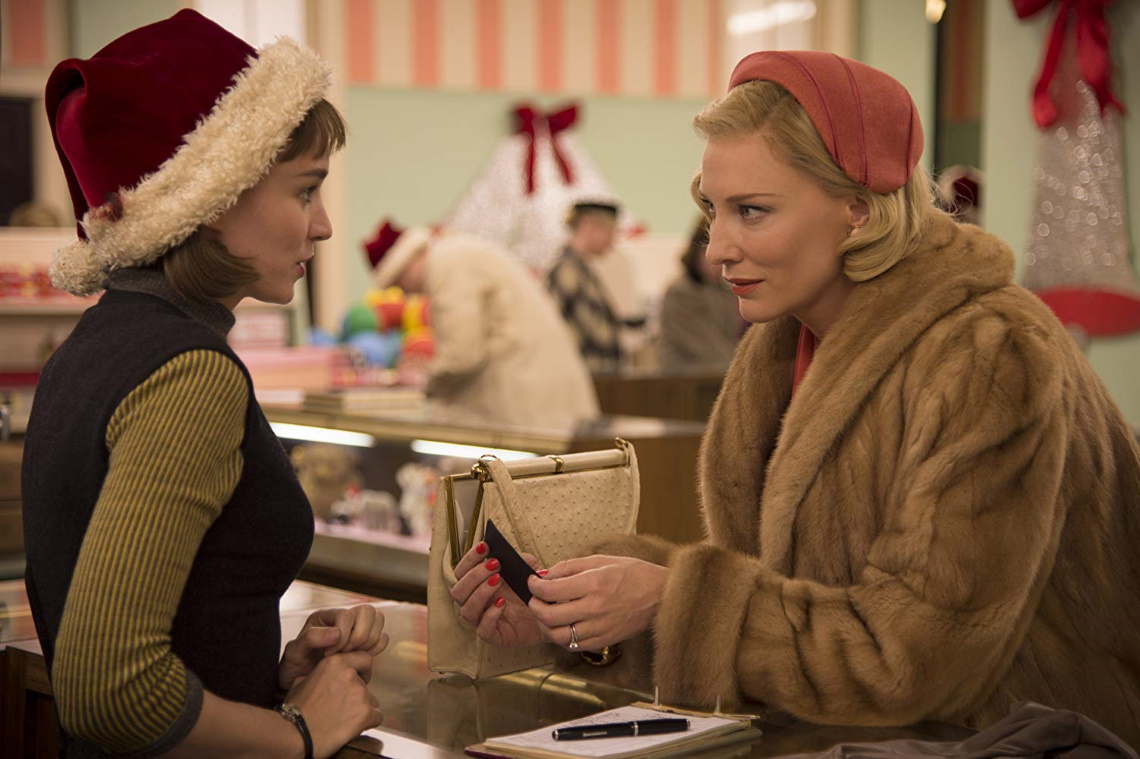
12=. Carol (2015)
From the moment the soon-to-be-divorced socialite Carol Aird (Cate Blanchett) slaps her gloves down on shopgirl Therese Belivet’s (Rooney Mara) department-store countertop in Todd Haynes’ Carol, a new kind of queer representation was thrust into the mainstream. Carol’s lustful pursuit of the much younger Therese via knowing glances and carefully constructed insinuations – buoyed by Blanchett’s inimitable grace and tender stoicism – can read like the stuff of old-school lesbian love tragedies to the uninitiated, but the verve and passion with which they begin to bond is decidedly new school. (Look to Tumblr for proof of its cred with the kids: “Harold, they’re lesbians!”) Yes, there’s no mention of “gay” or “lesbian” – just like in other ‘50s-set queer narratives. That’s not because everyone’s talking around the rainbow-colored elephant-in-the-room, it’s that Carol is so unabashedly confident in her sexuality, labels be damned. If only the rest of her (and the) world would catch up.
Haynes and screenwriter Phyllis Nighy smartly expand the film’s source, Patricia Highsmith’s 1952 novel The Price of Salt (later republished as Carol and sans Highsmith’s previously necessary pseudonym), beyond Therese’s first-person perspective to include the titular character’s experiences. Instead of just being a “thriller” locked inside the mind of a “flung out of space” obsessive, this adaptation blossoms into a dual portrait of self-discovery and self-actualization. The smartest invention, however, is moving Therese’s passion from stage design to photography, allowing for Haynes to dissect that medium – and, by logical extension, cinema – and its ability to capture human identity and experience. Rendered in lush, saturated colors and grainy Super 16mm cinematography by Ed Lachman, Carol becomes a treatise about spectatorship and identification, proximity and identity. In its swoon-inducing, heart-swelling final beat, the film graciously suggests these are not fixed positions. The freedom of possibility afforded to these star-crossed lovers by Highsmith and Haynes is perfectly encapsulated by the book’s final line, writ large onscreen: “Therese walked towards her.” (Joshua Ray)
12=. The Social Network (2010)
Facebook was only 6 years old when David Fincher and Aaron Sorkin’s mesmerizing account of its inception, The Social Network, was released into theaters in the fall of 2010. The world changed seemingly overnight in the ’10s with the rise and influence of social media in our culture. Twitter was introduced in 2006, and Instagram and Snapchat wouldn’t launch until late 2010 and 2011, respectively. To say social media was in its nascent stage at the time of the film’s release would be an understatement, which, when looking back 10 years later, gives the film added significance, making it one of the very best of the 2010s.
Technically speaking, all of the film’s collaborators were in peak form, delivering entertainment and art at the highest level. Sorkin’s Oscar-winning script elevates Fincher’s direction, while Fincher’s precise style, working again with cinematographer Jeff Cronenweth, gives Sorkin’s dialogue a fresh look and feel. Trent Reznor and Atticus Ross’s haunting score was arguably the best of the 2010s and certainly one of the most influential. As for the cast, the film launched the careers of Andrew Garfield, Rooney Mara, Armie Hammer, and Dakota Johnson while giving Justin Timberlake his best film role to date as Napster founder Sean Parker. And Jesse Eisenberg’s portrayal of hoodie-wearing Mark Zuckerberg instantly became iconic.
As we move into a decade of uncertainty regarding the future of social media and its impact on everything from our elections to our personal relationships, The Social Network serves as an indelible, prescient time capsule of the 2000s, when our phones still flipped and our definition of being a “friend” and “liking” someone meant more than just a click on a screen. (Pete Maniscalco)
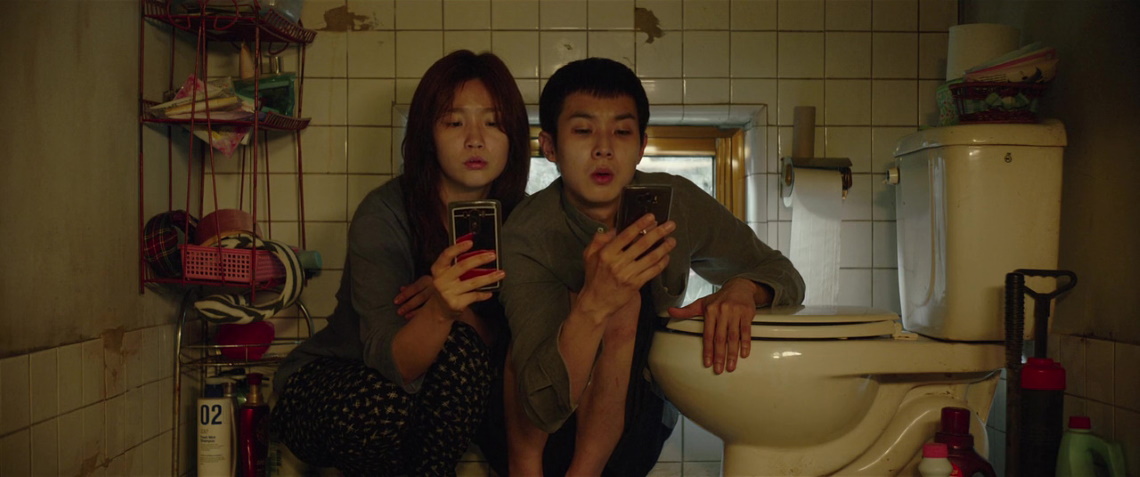
11. Parasite (2019)
After you’ve seen Bong Joon-ho’s Parasite, you want to talk about it. Although you want to talk about it with someone who has also seen it, so as not to ruin it for the uninitiated. When you find that someone, you both know you have seen something special. It’s a club where you can just say things that only a select few know. I want to thank those who saw it before I did and kept me out of the loop until I could talk to them about: that guy in the alley; the couch scene; why did the Kims have to lie to the Parks about that; that kick.
Parasite wasn’t my favorite film of 2019, which was The Farewell, for all its positivity. However, I think Parasite will have a lasting effect on me and on everyone who sees it. Like The Farewell, it may be “foreign” but it’s still universal. Parasite will be remembered as a true characterization of the decade. It really says a lot about Bong Joon-Ho's brilliance as a storyteller and a director. Parasite stands out for what he achieved, his vision, his ability to blend genres and be so relatable.
You’ll notice nothing has been said about the plot, the premise, or really anything about the film. I won’t. I want you to join our little club so we can talk about “that kick.” It is perfect. (Carl Middleman)
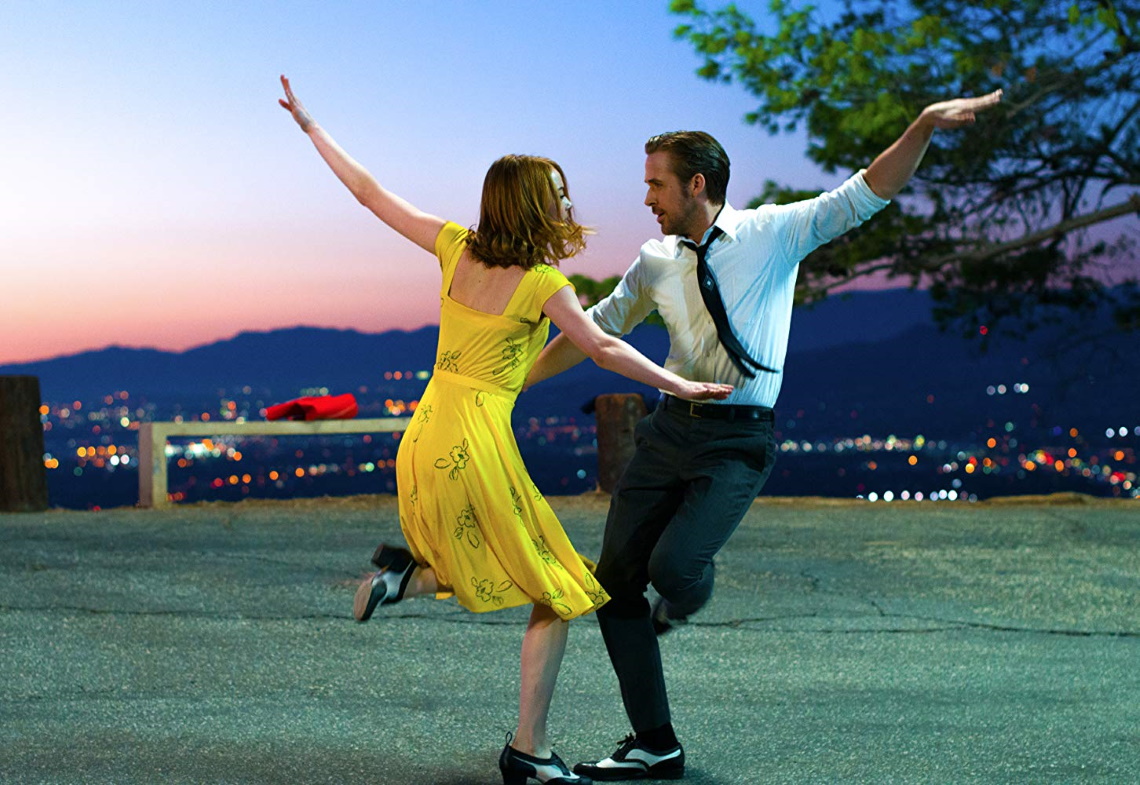
10. La La Land (2016)
“And the winner is …” Who can forget that final moment of the 2017 Oscars, when La La Land almost won the Best Picture Oscar. This gaffe encapsulated the polarized opinions swirling around a film that hoped to be a golden child. And this is the exact reason this film belongs on this list. Whether you loved the film or not, La La Land revived the cinematic musical with a modern twist, unintentionally aimed at engaging new generations. Serving as a whimsical escape, the film transports viewers through the journey artists face while honing their craft and the dazzling encounters that can chart their direction on a different course. The performances by Ryan Gosling and Emma Stone were charming and offered the same chemistry as Gene Kelly and Debbie Reynolds in Singin’ in the Rain (1952), although their technical skills paled in comparison to the magical steps of Fred Astaire and Ginger Rogers. This minor flaw should be overlooked, however, when you consider the other accomplishments of the film. La La Land waltzes through the history of film musicals, capturing the viewers' attention from start to finish. From an eye-grabbing, toe-tapping, colorful opening scene pirouetting through the splashes and scenes of a new spin on Hollywood life to the emotional twist conclusion, the film goes beyond the heavy hitters of the year and validates the 33 major nominations and 18 awards it did receive in 2016-17. (Bree Maniscalco)
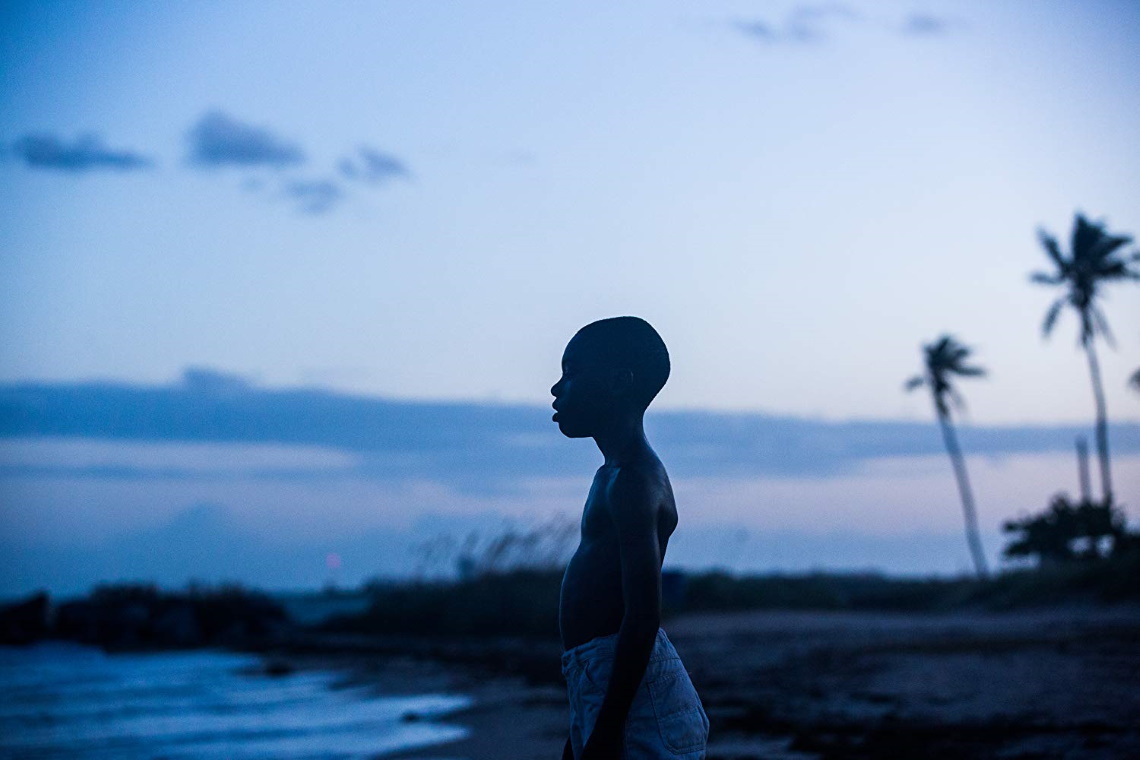
9. Moonlight (2016)
Ask anyone to give the most memorable moment that Moonlight gave us and you can expect to receive a common response: The filmmakers responsible for La La Land, on stage at the Academy Awards, admitting Faye Dunaway’s mistake and proclaiming Barry Jenkins’ explosive film the Best Picture of 2016. While this is unfortunate for a film that proclaims its story with visual boldness and emotional honesty so rarely seen on screen, it’s also fitting, as Moonlight’s selection for that accolade must have involved many crusty old voters consciously repudiating the tired predictability of a Hollywood fable in favor of something far more important and ground-breaking.
The most indelible moment in the film is Mahershala Ali’s Juan holding a young Chiron (Alex Hibbert) above the South Florida waves, teaching him to swim and, by extension, survive in a world that will never look on him favorably. We are submerged in the water with Chiron and share his journey as he runs from and confronts a failed relationship with his mother, broken friendships, betrayals, and struggles with his sexuality. Jenkins never flinches in showcasing Chiron’s (later Ashton Sanders and Trevante Rhodes) flaws and the character’s frequent stumbles in his attempt to navigate his circumstances. Telling a story in segments is always a gamble, but the narrative spine of survival and rebirth is inescapable and Chiron’s flawed innocence, even as a grown man, is profound and powerful. There’s no way to package, this story perfectly, and Jenkins doesn’t try, leaving Chiron’s story ragged and incomplete – only adding to its resonance. The film is driven by its portrayal of race, sexuality, and marginalization as it leaves a mark on Chiron’s character and soul while shaping his past, present, and future. Beautifully shot and rendered onscreen, Moonlight represents a landmark in American cinema and will always be known as one of the infrequent times when the Academy got it right. (Andrew Millians)
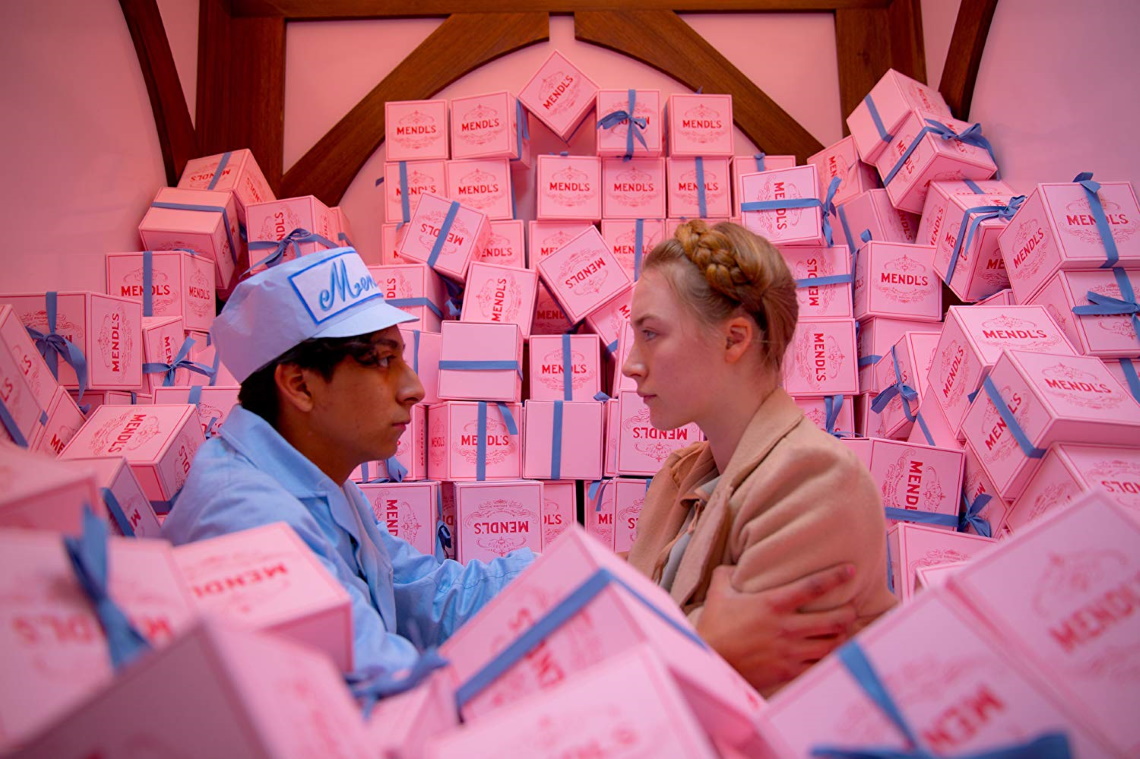
8. The Grand Budapest Hotel (2014)
Just as I set to work on this hosanna to The Grand Budapest Hotel, I happened to scan Film Comment’s own survey of the 2010s and discovered that Wes Anderson’s work was entirely absent: Not only did The Grand Budapest Hotel fail to crack the magazine’s collectively sourced 50 Best Films of the Decade, but no mention of an Anderson film – Moonrise Kingdom and Isle of Dogs were also made during the last 10 years – could be found on any of the voters’ individual lists. Curious, I began Googling other such decade’s-end assessments and was dismayed to find that Anderson left only the faintest of traces (IndieWire’s list appears the one modest exception, with Budapest struggling in at No. 32 on its Top 100). Even RogerEbert.com – whose editor at large is Matt Zoller Seitz, author of the exemplary The Wes Anderson Collection and a follow-up book devoted exclusively to Budapest – exiles the director not just from its Top 25 but also from a list of 45 honorable mentions.
Perhaps we’re just benighted rubes here in the flyover Midwest – Film Comment’s high-toned selections were largely made by habitués of the international-film-festival circuit – but Anderson’s exclusion remains vexing to this self-admitted devotee of his work. Vexing but not entirely surprising, given that his films seem consistently undervalued by the arbiters of culture. Despite Anderson’s fanatical cult following and (excepting The Life Aquatic and The Darjeeling Limited) primarily laudatory reviews, there’s a “yes, but” aspect to the significant praise the director has earned over his career, a persistent tendency to qualify his achievements. Anderson’s specialization in comedy factors heavily in this hedging – he’s insufficiently engaged with “serious” issues – and the white, upper-class milieu that he often explores in his movies further problematizes his status in our increasingly diverse and woke country. (These criticisms, of course, ignore both the melancholic undercurrent in his films and Anderson’s fascination with the Indian subcontinent, which includes the use of Kumar Pullana and Waris Ahluwalia as part of his stock company of actors.) What most annoys his detractors, however, is Anderson’s distinctive visual style: the symmetrical compositions, the precisely controlled tracking shots, the deliberate artifice, and – especially – the fussily art-directed dollhouse aesthetic. The critics’ preferred demeaning descriptor: twee.
Well, I happen to adore Anderson’s highly identifiable (and undeniably easy-to-parody) pictorial approach. Detractors often claim that his stylistic quirks limit Anderson to a fantastical realm of his own making, related to but ultimately apart from our own quotidian reality. I disagree: The short “Hotel Chevalier,” which serves as the elliptical prologue to The Darjeeling Limited, forcefully demonstrates that the filmmaker is fully capable of applying his trademark mise en scène to a more conventionally dramatic story – in this case, a troubled romance – if he chooses. To our considerable benefit, Anderson simply prefers to construct, populate, and lavishly decorate his own unique worlds, filled with delight, wonder, and – it should be emphasized – a fair amount of dread.
Which brings us, at last, back to The Grand Budapest Hotel. The story of the titular hotel’s masterful concierge, M. Gustave (Ralph Fiennes), and his earnest protégé, the apprentice lobby boy Zero (Tony Revolori), the film unfolds (primarily) between the world wars in the fictional Mitteleuropean country of Zubrowka. Fascism’s encroachment shadows the action throughout, but the narrative centers on the pursuit of M. Gustave – an unexpected beneficiary of the estate of the wealthy Madame D. (a hilariously decrepit Tilda Swinton) – by aggrieved heir Dmitri (Adrien Brody) and his murderous henchman (Willem Dafoe). The absurdly overstuffed plot includes multiple murders, a youthful romance, a baroquely elaborate prison break, a breathlessly headlong chase in the snow, and a climactic return to the Grand Budapest for a farcical shootout and Hitchcockian dangle from a great height. And this précis barely hints at the exquisitely engineered structure of the film, with its nested-doll framing sequences (shot in differing aspect ratios) and whiplash tonal shifts.
There’s so much to love in The Grand Budapest Hotel, from its sprawling cast of superb actors (including Tom Wilkinson, Jude Law, F. Murray Abraham, Saoirse Ronan, Mathieu Almaric, Harvey Keitel, Léa Seydoux, Fisher Stevens, and such regulars as Bill Murray, Edward Norton, Jason Schwartzman, Owen Wilson, Bob Balaban, and Larry Pine), to the dizzying profusion of Andersonian details (such as the animated Russian folk dancer who enthusiastically squat-kicks and jumps during the closing credits), to the gorgeous, Oscar-winning score by Alexandre Desplat. The film’s towering achievement, however, is Fiennes’ performance, a beautifully calibrated turn that moves between comic outrage, officious sternness, and naked emotional vulnerability. A scene in the film’s latter half best encapsulates the character’s multidimensionality: After first dressing down a chastened Zero for a failure of preparation, M. Gustave becomes distraught on learning of the lobby boy’s refugee past, with the actor shifting seamlessly – and believably – from quaking anger to aching tenderness.
Fiennes’ M. Gustave truly contains multitudes – which also aptly describes The Grand Budapest Hotel. (Cliff Froehlich)
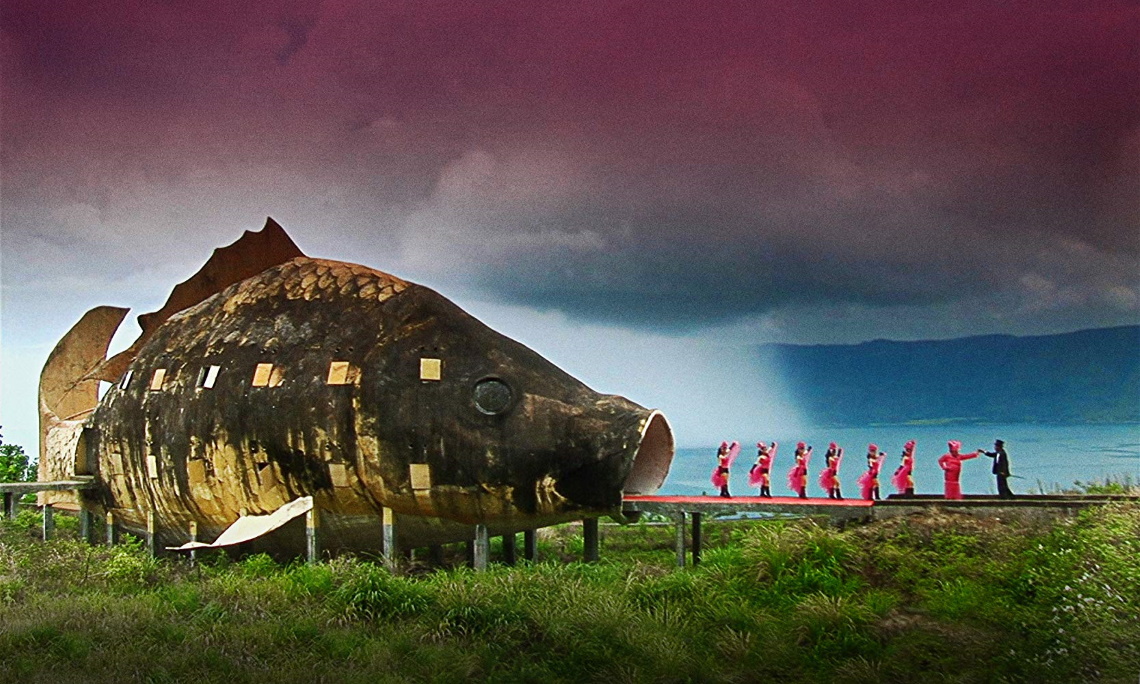
7. The Act of Killing (2013)
A common locus of interest in cinema studies in the 2010s was the permeability of the border between narrative and documentary filmmaking. As witnessed in his early short films, director Joshua Oppenheimer was perhaps more interested in that between documentary and experimental cinema. When he eventually tackled the project that became The Act of Killing, the director jumped off from the point of, as Oppenheimer put it, "[You're] in Germany 40 years after the Holocaust, but the Nazis are still in power." In this case, he went to Indonesia 40 years after the mass killings of 1965-66, only to find the perpetrators still in charge. Oppenheimer had years of work as an AIDS activist and an impressive number of vanguard-pushing short films on his resume (not to mention a Harvard education). In Act, he poses as a Hollywood director and convinces the perpetrators to re-enact their atrocities for the purposes of making an American-style gangster movie of the sort they so adore.
The Act of Killing makes use of all of the director’s previous experience and more. To be sure, it's a film that explores the difference between narrative and documentary (or narrative and "the narrative," if you will), but isn't afraid to take the chances of an experimental film and, most importantly, really wants something from the viewer, from the world, from itself. It's at once a stunt film that puts Sacha Baron Cohen to shame and a furious look at the darkness of man that one-ups even Shoah (1985). Oppenheimer was 37 at the time the film premiered, and may he have many decades of brilliant filmmaking ahead of him: Just since its 2012 premiere, Oppenheimer was awarded a MacArthur “genius grant” and finished and released the almost-as-good companion piece to Act, The Look of Silence.
Note: The U.S. theatrical cut, clocking in at about two hours, is excellent, but the longer director's cut is greatly preferred; it achieves a certain momentum toward its end that might just make you sick (too). (Pete Timmermann)
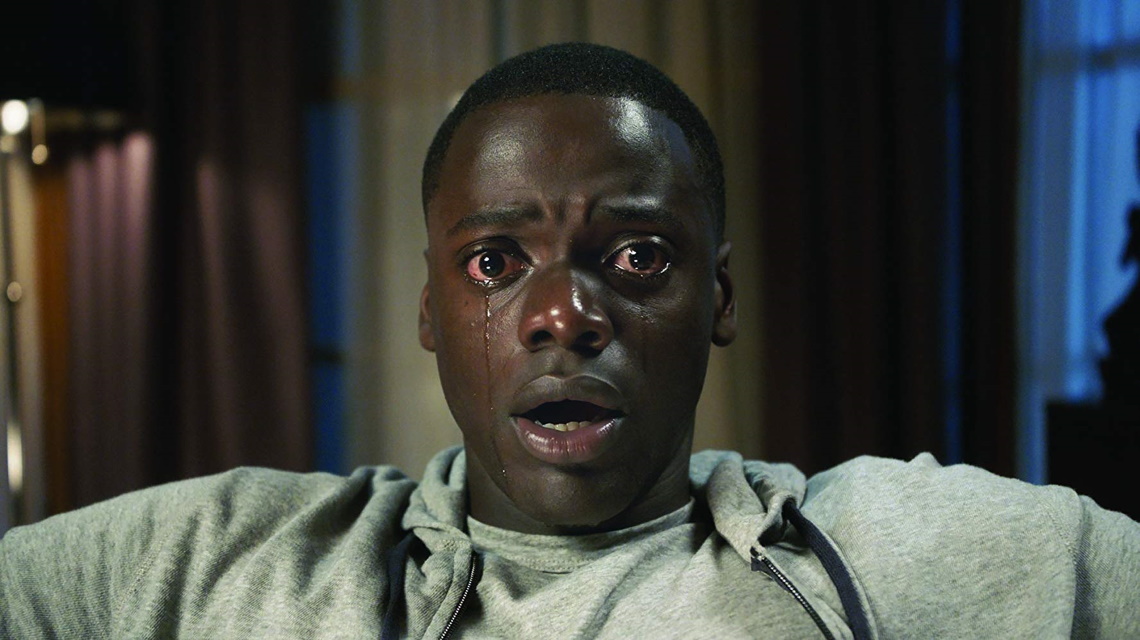
6. Get Out (2017)
Striking a near-perfect tonal balance, writer-director Jordan Peele – previously best known as part of comedy duo Key and Peele and for screenwriting efforts on goofball flick Keanu (2016) – delivers a knockout with Get Out, at once a searing racial satire that grapples with the zeitgeist and a paranoid horror film that winds us up with an escalating sense of dread, all of it undercut by Peele’s pointed comic sensibility. The film, which netted the Best Original Screenplay Oscar for the writer-director, lures us in with a familiar scenario ingeniously cribbed from Guess Who’s Coming to Dinner? (1967) – the black boyfriend as a fish out of water at his white girlfriend’s parents’ house – before taking things to unexpected extremes. Even if the third act goes off the rails, it does so with inspired – and darkly hilarious – abandon, giving us twists, turns, and gore aplenty. The film’s runaway commercial (and critical) success – alongside other horror offerings like The Witch (2016), The Babadook (2014), and Hereditary (2018) – speaks to the emergence of horror as the genre for the exploration of social issues for a broad audience (a duty previously reserved for hard drama). And while Peele may not have been able to work the same magic with sophomore effort Us (2019), it’s clear that he’s a genre master working at the top of his game and has much more to offer. (Peter Hanrahan)
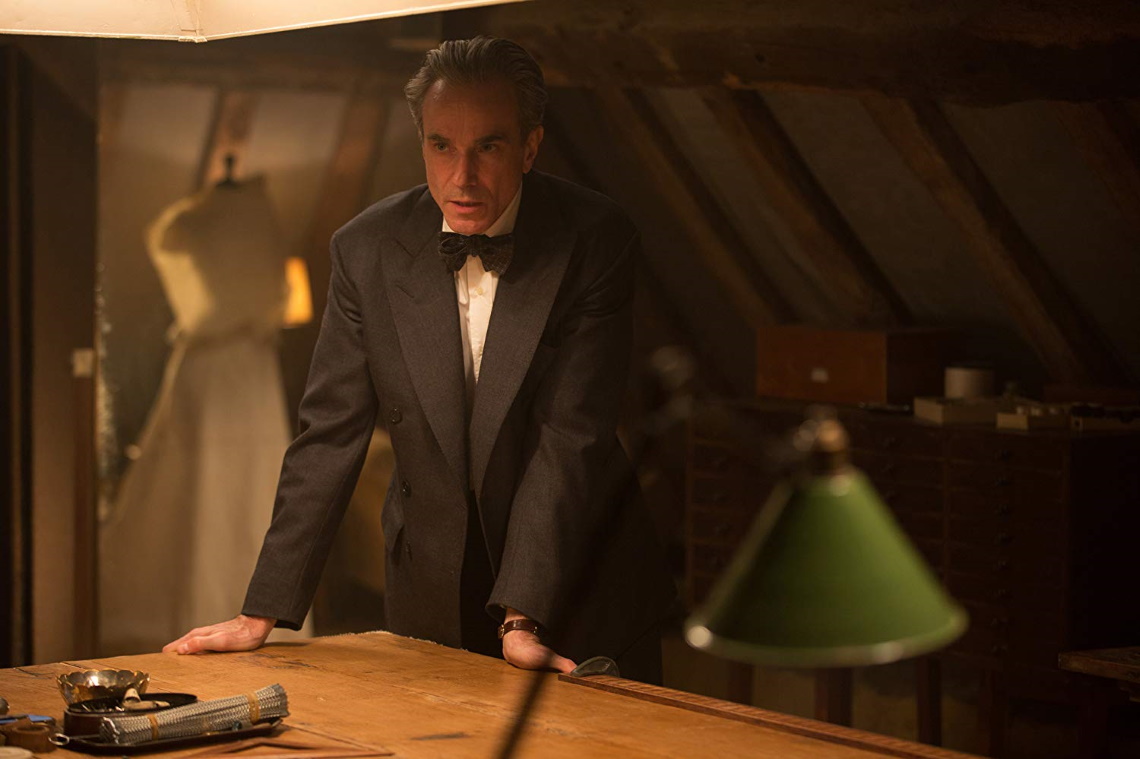
5. Phantom Thread (2017)
In between directing music videos for the California-based band of sisters Haim and an eclectic bunch of Thom Yorke projects, Paul Thomas Anderson – poster child of the video-store generation – graced audiences with a spectacularly strange send-off for one of the finest actors of our time. Phantom Thread stars Daniel Day-Lewis as Reynolds Woodcock, a renowned dressmaker in 1950s postwar London. He's quite particular about how things are done in the House of Woodcock: not too much noise at breakfast (it'd be very hard to recover from a noisy or bothersome breakfast), no loud or boorish behavior in a Woodcock dress (unless you want it revoked), and always oil and salt over butter when cooking (especially when it comes to asparagus).
Judging by the meticulous craft that defines his work life, it only makes sense for Reynolds to be equally demanding with his latest muse in a long-running series: Alma (Vicky Krieps), a young woman he seduced in the English countryside while ordering a particularly attractive breakfast. From the moment she first slips into one of his dresses, the two become as inseparable as the secrets he sews into the linings of his pieces. They prove to be a match made in purgatory – a toxic, neurotic, codependent relationship both professionally and personally. It's an absolute joy to watch it all unfold: the couple has more in common with an ugly white dress covered in holes and smudges than with the velvety couture the Woodcock name is synonymous with, but neither Alma nor Reynolds would ever admit that their love is far more hellish than heavenly. They’re having too much fun playing house to pretend otherwise. (Kayla McCulloch)
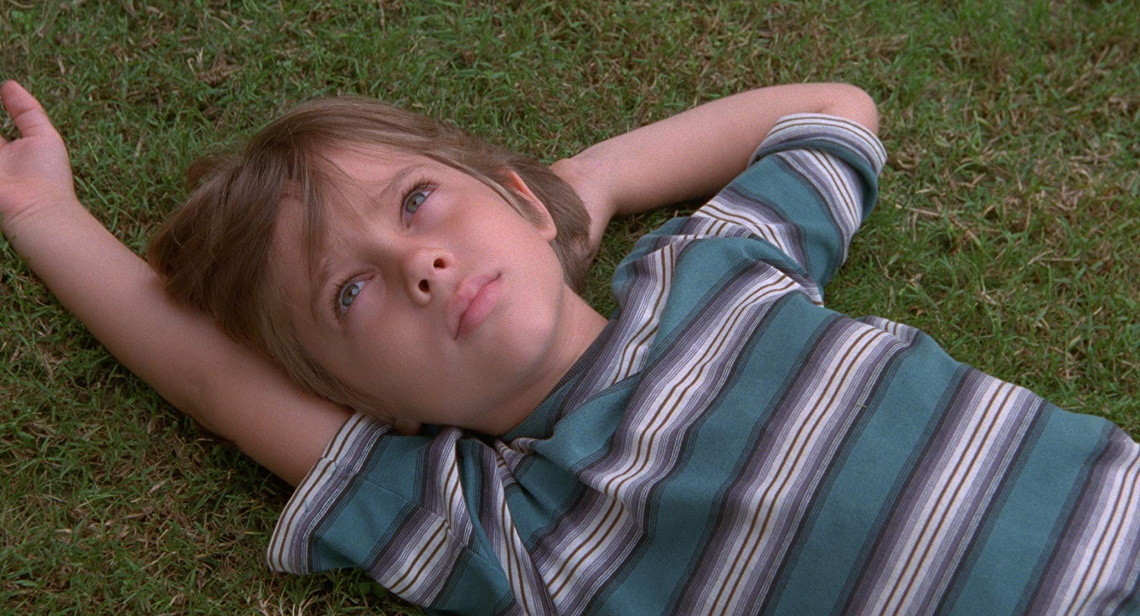
4. Boyhood (2014)
Profound yet deceptively simple, Boyhood tapped into our deepest feelings with its familiar journey. We saw a child’s life from a fresh perspective, revealing snapshots captured over 12 years. In 2014, it touched me personally -- because it was my story, and it was the life of my two sons, then ages 26 and 29. Universal in scope, it could have been your story, too.
Ambitious writer-director Richard Linklater filmed a segment of the movie once a year over 12 years, with Ellar Coltrane playing Mason from age 6 to 18 – a time travel of haircuts, campouts, crushes, birthday parties, and rites of passage. Groundbreaking then, it holds up now as a cinematic work – a fluid, frank portrait of adolescence and parenthood. Linklater’s Before trilogy distinguished him as a unique voice, and his brilliance as a screenwriter has always been in the littlest details, highlighting the small moments that shape our lives.
Coltrane was a blank slate as Mason – a regular boy tussling with his annoying sibling, pouting about parental decisions, playing video games, mumbling, fumbling with girls, and then, entering college, confidently going in the direction of his dreams. The director’s own daughter, Lorelei Linklater, comfortably played older sister Samantha. As the well-meaning parents who divorce early, Ethan Hawke and Patricia Arquette were Oscar nominated, with Arquette winning the trophy. Their natural, nuanced portrayals helped a family dynamic emerge. Also inspired were the music choices, cinematography by Lee Daniel, and remarkable editing by Sandra Adair, who has cut every Linklater film since Dazed and Confused (1993).
Some argue that the film meanders, that it sags, that at 2 hours and 45 minutes it is too long, and that it concentrates too much on the mundane. But its ordinariness is its wisdom, its truth. Perhaps, on revisiting, you will notice your evolution, too. (Lynn Venhaus)
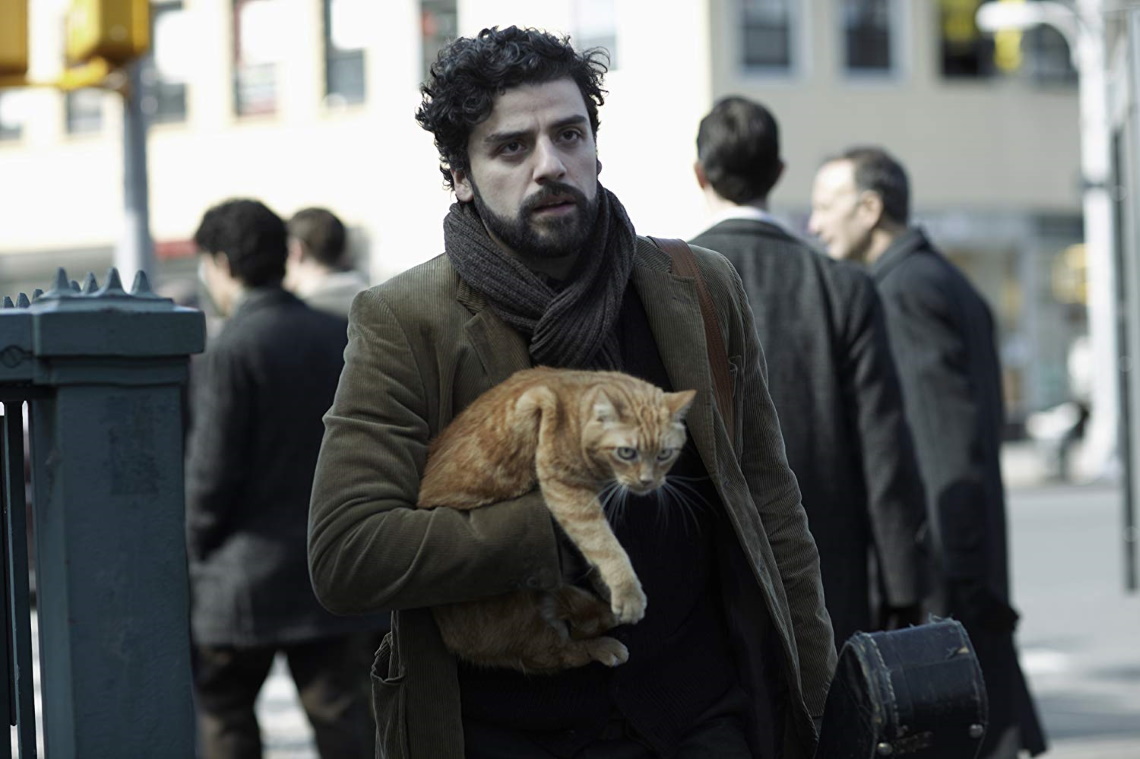
3. Inside Llewyn Davis (2013)
Joel and Ethan Coen spent the 2010s in a time machine, visiting Old Hollywood (Hail, Caesar! [2016]) and the Old West (twice, in True Grit [2010] and The Ballad of Buster Scruggs [2018]), but their stopover in the early 1960s Greenwich Village folk scene stands a hair above these efforts. Inside Llewyn Davis invites us for one spin in the endless cycle of a couch-crashing troubadour's stabs at artistic success; that is, singing songs into as many ears as will hear them while remaining hellbent on armored insularity.
Oscar Isaac’s Llewyn opens and closes the film with a song he says was never new and will never get old. Similarly, the film breathes now as easily as it did in 2013, as well as when it was set. To wit, the affordability/portability of the acoustic guitar leveling the playing field, giving the average would-be folk star of the ’60s a chance to reach the firmament just as iPhones do today for would-be YouTube sensations connecting to the world while holed up in the privacy of their bedrooms. Llewyn cannot connect with others because he doesn’t want to, and he doesn’t want to because he can’t. He seems able to care only for a similarly inscrutable creature: an ever-escaping cat.
Many of the Coen brothers’ hallmarks are here: parlance you can almost hear the authors snickering over, slapstick that doesn’t present as slapstick, a John Goodman performance that is both scene-stealing and taken for granted.But this is the rare Coen film that is neither shot by Roger Deakins (pinch hitter Bruno Delbonnel crushes it, though, lighting faces both warmly and ghastly) nor blessed with a score. Like O Brother, Where Art Thou? (their prior Odyssey from 2000) the all-folk soundtrack curated by T Bone Burnett was worthy enough to inspire its own concert. Some of the songs in the film are new, many are old – as are other leitmotifs – but it is all timeless. The Coens are masters of making the genre tropes that formed them seem newborn. Inside Llewyn Davis, like many a Coen masterwork, was never new and will never get old. (Matt Myers)
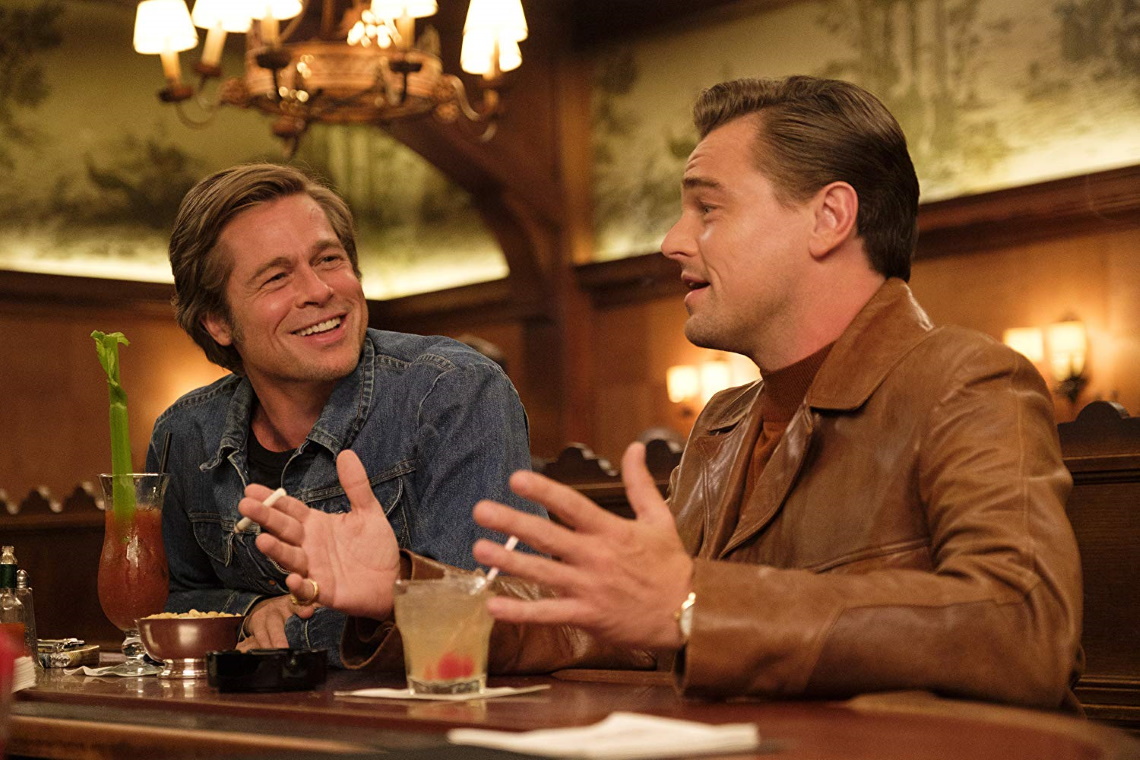
2. Once Upon a Time... in Hollywood (2019)
Quentin Tarantino has always had a gift for seeding his films with drips and drops of the pop-culture past, but the TV clips and magazine covers, the old radio chatter, and the Top 40 hits aren’t just name-checking and showing off his Trivial Pursuit credentials. They’re the inner lining of falling star Rick Dalton’s (Leonardo DiCaprio) crumbling psyche, the last murmurings of a macho zeitgeist that tells him what to wear (Hai Karate), how to handle women (courtesy of Roy Head’s 1965 hit “Treat Her Right”), and, most importantly, how to enjoy his brief time as a TV cowboy even as it slips away. Once Upon a Time … in Hollywood is a history-bending account of a cultural earthquake, with Rick and his laid-back sidekick Cliff Booth (Brad Pitt) trying to keep their balance, while starlet Sharon Tate (Margot Robbie) and the young girls hanging out with Charlie Manson at the Spahn Ranch do their best to stir up aftershocks. This may be the first time in his career that Tarantino has given characters psychological depth and an awareness of their own shortcomings, making it both a comic fantasia on Los Angeles circa 1969 and an elegy for a certain sense of identity falling out of favor. (Robert Hunt)
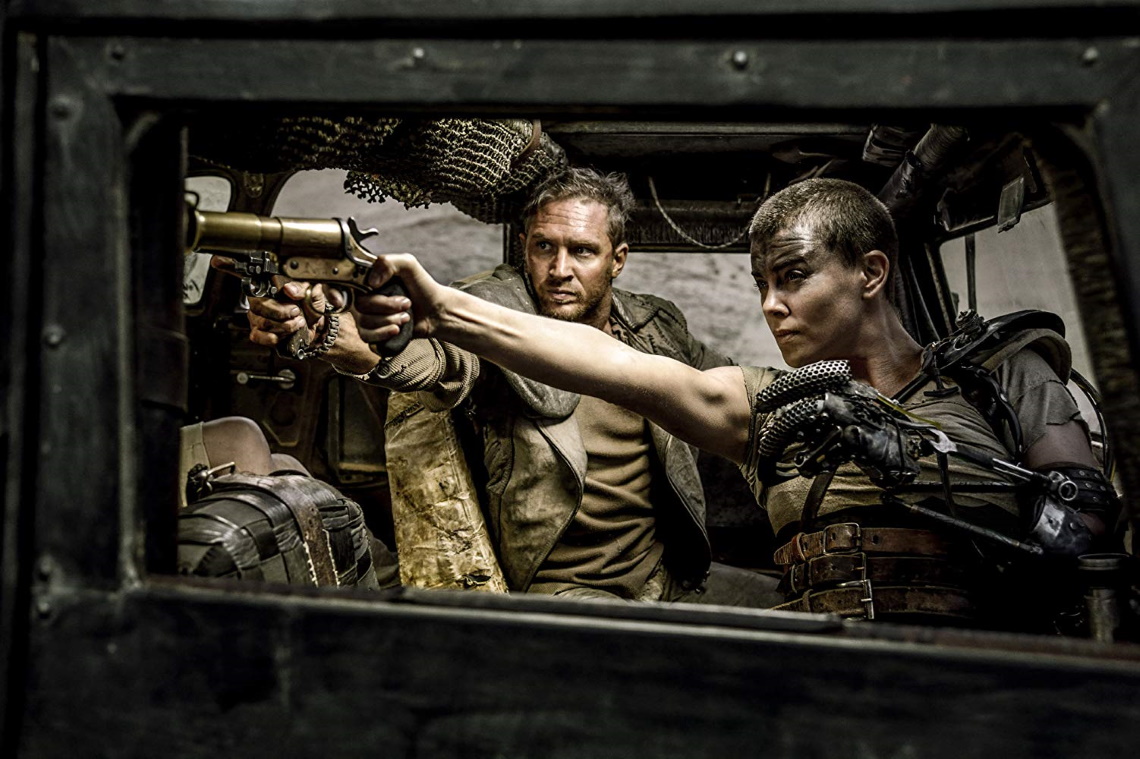
1. Max Max: Fury Road (2015)
As the 2010s came to a close, an innocuous Film Theory 101 query incited vicious knife-fights among movie lovers, including many who make movies themselves: What is cinema? Director George Miller’s ferocious, balletic magnum opus answers that question through its very existence. Uniting pop-spectacle enthusiasts and high-minded cineastes like no other film of the past decade, Mad Max: Fury Road thundered its triumph like a blood-spattered, guzzaline-drenched Ares: I am cinema! Distilled down to its high-octane essence, the film is a simple race to there and back again. In the director’s mad conception, however, Fury Road becomes a howling, remorseless flight from bondage, from delusion, from the terror of our own civilization’s sputtering demise. It’s all too easy to gush over the film’s technical brilliance, but the black magic of Miller’s masterpiece lies at the tripartite intersection of its conceptual elegance, its thematic sophistication, and its lunatic, movie-making brio. Like Max Rockatansky himself, Fury Road has entered the realm of the mythic; a mysterious-yet-familiar figure who came roaring out of the burning wastes to save us from mediocrity – or more accurately, to lend his burly shoulder to our own do-or-die, U-turn escape. Rather than abandon contemporary cinema as a festering behemoth on life support, Fury Road urges us to double-back, much like Furiosa and the Wives. To truly love movies, it insists, is to return to the source, to revel in the sort of exhilarating cinema that sustains the spirit. What a lovely day indeed. (Andrew Wyatt)
The Contributors' Lists
Jim Batts - Critic, We Are Movie Geeks; Member, St. Louis Film Critics Association
(Ranked) The Shape of Water; La La Land; Marvel’s The Avengers; Spider-Man: Into the Spider-Verse; Mad Max: Fury Road; Bridesmaids; Argo; Once Upon a Time ... in Hollywood; The Artist; Drive; Hugo; Life of Pi; Spotlight; American Hustle; Whiplash
Dan Buffa - Critic, KSDK (NBC 5) and KFNS (590 AM); Member, St. Louis Film Critics Association and Critics Choice Association
(Ranked) Silver Linings Playbook; Chef; A Star Is Born; The Peanut Butter Falcon; Spotlight; Arrival; The Post; The Intouchables; Once Upon a Time … in Hollywood; Begin Again; The Martian; Wind River; End of Watch; Inception; Hell or High Water
Diane Carson - Critic, KDHX (88.1 FM); Member, St. Louis Film Critics Association and Alliance of Women Film Journalists
(Ranked) The Two Popes; Parasite; Roma; Moonlight; Lady Bird; Black Panther; Carol; Spotlight; The Tree of Life; The Turin Horse; 12 Years a Slave; Beasts of the Southern Wild; The Grand Budapest Hotel; Carlos; Inception
Mat DeKinder - Critic, Suburban Journals of Greater St. Louis; Vice-Director, St. Louis Film Critics Association
(Unranked) 1917; 12 Years a Slave; Argo; The Cabin in the Woods; Django Unchained; The Grand Budapest Hotel; Guardians of the Galaxy; The Hunger Games; Inception; Lincoln; Mad Max: Fury Road; The Martian; Once Upon a Time ... in Hollywood; Scott Pilgrim vs. the World; Skyfall
Maxamillion Foizey - Host, "Max on Movies", KTRS (550 AM); Contributor, ZekeFilm; Member, St. Louis Film Critics Association and Critics Choice Association
(Ranked) Black Swan; Clouds of Sils Maria; Once Upon a Time ... in Hollywood; Parasite; La La Land; Moonlight; The Lego Movie; The Perks of Being a Wallflower; Prisoners; Gone Girl; Get Out; Spider-Man: Into the Spider-Verse; Inside Out; Hostiles; August: Osage County
Cliff Froehlich - Executive Director, Cinema St. Louis
(Ranked) Twin Peaks: The Return; The Act of Killing/The Look of Silence; The Grand Budapest Hotel; The Wolf of Wall Street; Lady Bird; Stories We Tell; Boyhood; Inside Llewyn Davis; Once Upon a Time ... in Hollywood; Faces Places; Mad Max: Fury Road; A Separation; Get Out; Minding the Gap; Force Majeure
Peter Hanrahan - Facilitator of Scriptwriting, Webster University
(Unranked) Annihilation; Arrival; Blade Runner 2049; Dragged Across Concrete; Ex Machina; Get Out; Hell or High Water; Hereditary; Mad Max: Fury Road; Nightcrawler; Prisoners; Rango; The Revenant; Sicario; You Were Never Really Here
Robert Hunt - Critic, Riverfront Times; Member, St. Louis Film Critics Association
(Unranked) Aquarius; The Assassin; BlacKkKlansman; Boyhood; Certain Woman; Clouds of Sils Maria; First Reformed; The Grandmaster; I, Daniel Blake; The Image Book; Inside Llewyn Davis; Maps to the Stars; Once Upon a Time ... in Hollywood; The Other Side of the Wind; The Shape of Water
Bree Maniscalco - Development Director, Cinema St. Louis
(Unranked) The Artist; Boyhood; Brooklyn; Call Me By Your Name; Get Out; The Grand Budapest Hotel; Inception; Inside Llewyn Davis; Inside Out; La La Land; Marriage Story; Moonlight; Once Upon a Time ... in Hollywood; Roma; Silver Linings Playbook
Pete Maniscalco - Director, Allied Global Marketing
(Ranked) Boyhood; Silver Linings Playbook; The Social Network; Get Out; Once Upon a Time ... in Hollywood; Inside Llewyn Davis; Parasite; The Master; Phantom Thread; Mad Max: Fury Road; La La Land; The Wolf of Wall Street; The Grand Budapest Hotel; Bridesmaids; Lady Bird
Kayla McCulloch - Critic, The Lens
(Ranked) Phantom Thread; Carol; Jackie; The Diary of a Teenage Girl; The Beguiled; Victoria; Palo Alto; Mustang; A Separation; The Intern; Inside Out; Paddington; Mistress America; Boyhood; The Grand Budapest Hotel
Ian McDonald - Publicist, Allied Global Marketing; Lunatic Gore Fiend & Price is Right Fanfictionalist
(Ranked) Mad Max: Fury Road; The Wolf of Wall Street; Raw; What We Do in the Shadows; The World's End; Suspiria; Mandy; The Neon Demon; Once Upon a Time ... in Hollywood; The Skin I Live In; The Ballad of Buster Scruggs; Straight Outta Compton; Logan; Twin Peaks: The Return; Ghostbusters
Carl Middleman - Critic, "The Weekend Report", Entercom Radio and "Max on Movies", KTRS (550 AM); Member, St. Louis Film Critics Association
(Ranked) The Lego Movie; Star Wars: Episodes VII-IX; Moonrise Kingdom; August: Osage County; Won't You Be My Neighbor?; Whiplash; Parasite; The Social Network; Sing Street; Eighth Grade; Midnight in Paris; Inside Out; Clouds of Sils Maria; The Shape of Water; Marvel’s Infinity Saga
Andrew Millians - Associate Professor of Cinema Arts, Lindenwood University
(Ranked) Moonlight; Inside Llewyn Davis; Get Out; Mad Max: Fury Road; The Handmaiden; Spider-Man: Into the Spider-Verse; Boyhood; Carol; Nightcrawler; Isle of Dogs; Shoplifters; John Wick; Sorry to Bother You; O.J.: Made in America; Snowpiercer
Matt Myers - Publicist, Allied Global Marketing
(Unranked) The Conjuring; The Duke of Burgundy; Inception; Inside Llewyn Davis; Inside Out; Jackie; Mad Max: Fury Road; Mandy; The Master; Moonrise Kingdom; Once Upon a Time ... in Hollywood; Phantom Thread; A Star is Born; The Tree of Life; The Wolf of Wall Street
Joshua Ray - Critic, The Lens; Co-Programmer, QFest St. Louis; Member, St. Louis Film Critics Association
(Ranked) Carol; Phantom Thread; Twin Peaks: The Return; Certified Copy; The Act of Killing; Under the Skin; If Beale Street Could Talk; O.J.: Made in America; Gone Girl; Burning; The Kid with the Bike; Long Day's Journey into Night; Like Someone in Love; Magic Mike XXL; The Wolf of Wall Street
Tom Stockman - Editor and Creative Director, We Are Movie Geeks; Member, St. Louis Film Critics Association
(Ranked) Mad Max: Fury Road; Once Upon a Time ... in Hollywood; Life of Pi; Dunkirk; Hacksaw Ridge; Birdman or (The Unexpected Virtue of Ignorance); Django Unchained; The Shape of Water; Under the Skin; The Mule; Paddington 2; The Disaster Artist; Wiener Dog; The Grand Budapest Hotel; Cafe Society
Kent Tentschert - Critic, Webster-Kirkwood Times; Treasurer, St. Louis Film Critics Association
(Unranked) American Animals; Arrival; Blade Runner 2049; Biutiful; Extremely Loud and Incredibly Close; Gravity; Inception; JoJo Rabbit; Joker; La La Land; Lincoln; Nightcrawler; The Revenant; Rogue One: A Star Wars Story; Three Billboards Outside Ebbing, Missouri
Pete Timmermann - Director, Webster University Film Series; Adjunct Professor of Film Studies, Webster University
(Ranked) The Act of Killing (Director’s Cut); Uncle Boonmee Who Can Recall His Past Lives; Dogtooth; Her; The Look of Silence; Karamay; Jodorowsky's Dune; Long Day's Journey into Night; Goodbye to Language; Beasts of the Southern Wild; Everybody Wants Some!!; Moonlight; Secret Sunshine; Cemetery of Splendor; Spring Breakers
Stephen Tronicek - Critic, We Are Movie Geeks
(Ranked) The Tree of Life; Okja; Two Days, One Night; Phantom Thread; Phoenix; Under the Skin; The Killing of a Sacred Deer; Beyond the Hills; The Turin Horse; Cosmos; Inherent Vice; Shoplifters; Raw; Knight of Cups; A Separation
Jim Tudor - Co-Founder and Site Manager, ZekeFilm; Critic, ScreenAnarchy; Adjunct Professor of Film Studies, Webster University; President, St. Louis Film Critics Association
(Ranked) The Tree of Life; Her; Mad Max: Fury Road; Toy Story 3; Scott Pilgrim vs. The World; Holy Motors; First Reformed; Paterson; The Turin Horse; A Ghost Story; Melancholia; Boyhood; If Beale Street Could Talk; BlacKkKlansman; La La Land
Lynn Venhaus - Critic, Webster-Kirkwood Times and KTRS (550 AM); Recorder, St. Louis Film Critics Association; Member, Alliance of Women Film Journalists and Critics Choice Association
(Ranked) Boyhood; Spotlight; The Social Network; Lady Bird; The Grand Budapest Hotel; Get Out; BlacKkKlansman; Mad Max: Fury Road; We Need to Talk About Kevin; The Big Sick; Hell or High Water; Begin Again; Won't You Be My Neighbor?; About Time; Zootopia
Keith Watson - Owner, Arkadin Cinema & Bar
(Ranked) The Turin Horse; Holy Motors; Goodbye to Language; Hard to Be a God; Toni Erdmann; The Act of Killing; Uncle Boonmee Who Can Recall His Past Lives; Li’l Quinquin; Phantom Thread; The Wolf of Wall Street; Good Time; Another Year; Parasite; A Touch of Sin; The Forbidden Room
Andrew Wyatt - Managing Editor, The Lens; Member, St. Louis Film Critics Association and Online Film Critics Society
(Ranked) Inside Llewyn Davis; The Master; Certified Copy; The Social Network; Mad Max: Fury Road; Silence; Roma; The Grand Budapest Hotel; The Turin Horse; The Witch; Under the Skin; Phantom Thread; 12 Years a Slave; Meek's Cutoff; Long Day's Journey into Night
Chang-Min Yu - Lecturer in Film and Media Studies, Washington University
(Unranked) The Act of Killing; Caniba; Dunkirk; Happy Hour; I Wish; Li’l Quinquin; A Separation; Stranger by the Lake; The Wailing; Venus Noire

